| INTRODUCTION | DESCRIPTION | HISTORY |
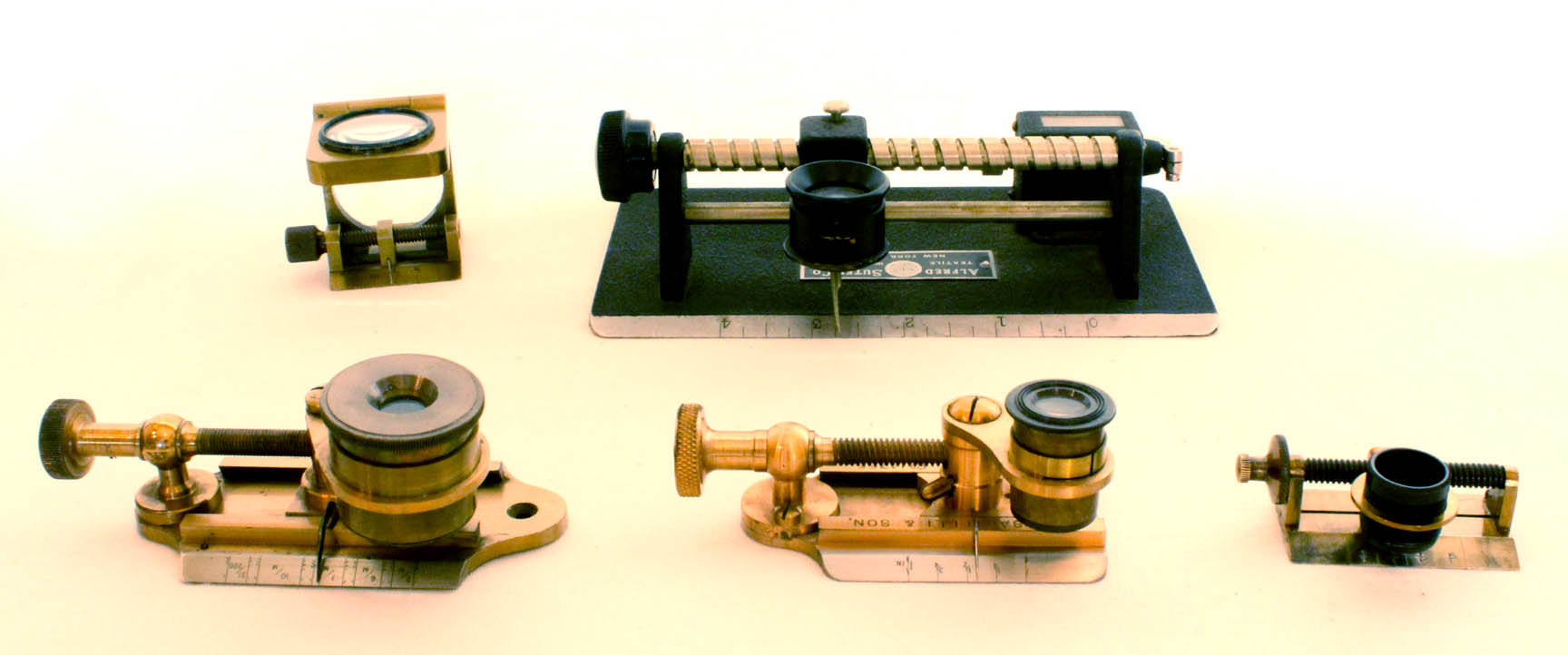 Among microscopes to assess linen, the latest type of instrument to be invented is the 'travelling' thread counter or 'Microscope Cloth Counting Glass.' This instrument is characterized by a scale along which a needle or pointer moves so that one can count the number of threads in any unit of length desired, within the limits of the instrument. Like the folding 'C' linen testers, these were made in a wide range of sizes. These apparently were not available until the early twentieth century. Instead of a standard opening, this type suspends the optics above a needle-pointer which moves along above an engraved scale on the base. This pointer is advanced via a worm screw. This type of tester came in a variety of sizes from about an inch to six inches in length.
Among microscopes to assess linen, the latest type of instrument to be invented is the 'travelling' thread counter or 'Microscope Cloth Counting Glass.' This instrument is characterized by a scale along which a needle or pointer moves so that one can count the number of threads in any unit of length desired, within the limits of the instrument. Like the folding 'C' linen testers, these were made in a wide range of sizes. These apparently were not available until the early twentieth century. Instead of a standard opening, this type suspends the optics above a needle-pointer which moves along above an engraved scale on the base. This pointer is advanced via a worm screw. This type of tester came in a variety of sizes from about an inch to six inches in length.
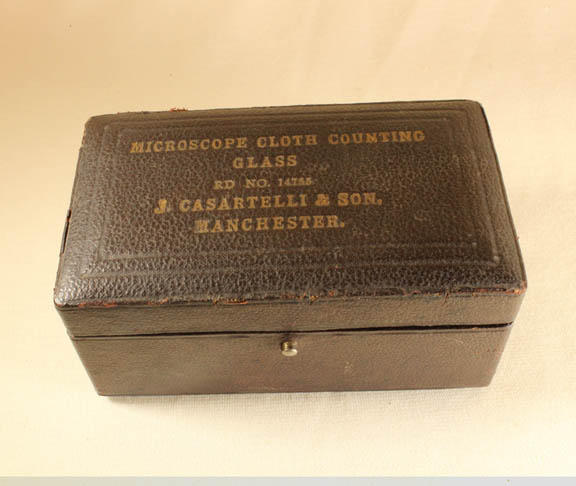 Signed 'J. CASARTELLI & SON' on one side of the instrument, and 'MANCHESTER' on the other. The case is signed 'MICROSCOPE CLOTH COUNTING GLASS, RD NO. 11768, J. CASARTELLI & SON, MANCHESTER'.
This 'Microscope Cloth Counting Glass', by Casartelli & Son is possibly from the first quarter of the twentieth century, circa 1908 or so. It comes in its own red-velour-lined case. It has two silvered scales, one one each of its longer sides.
There are two scales, one on each of the long sides. One is a continuous one inch scale calibrated and labelled in quarter inches, the other offers a selection of 5,6 or 10 mm and at the end of the metric scale is an area marked as '37/200' It features a focusing optical element which can swivel around to the other side to use the second scale. Another feature is the presence of tiny sharp pins on the bottom to prevent movement of the cloth while it is being used.
Signed 'J. CASARTELLI & SON' on one side of the instrument, and 'MANCHESTER' on the other. The case is signed 'MICROSCOPE CLOTH COUNTING GLASS, RD NO. 11768, J. CASARTELLI & SON, MANCHESTER'.
This 'Microscope Cloth Counting Glass', by Casartelli & Son is possibly from the first quarter of the twentieth century, circa 1908 or so. It comes in its own red-velour-lined case. It has two silvered scales, one one each of its longer sides.
There are two scales, one on each of the long sides. One is a continuous one inch scale calibrated and labelled in quarter inches, the other offers a selection of 5,6 or 10 mm and at the end of the metric scale is an area marked as '37/200' It features a focusing optical element which can swivel around to the other side to use the second scale. Another feature is the presence of tiny sharp pins on the bottom to prevent movement of the cloth while it is being used. 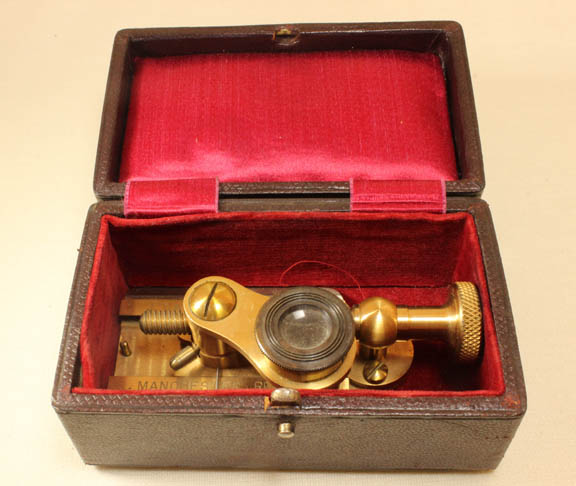
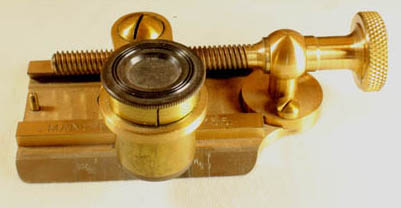
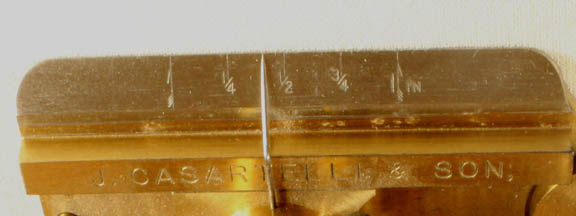
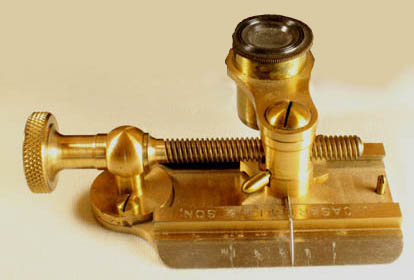
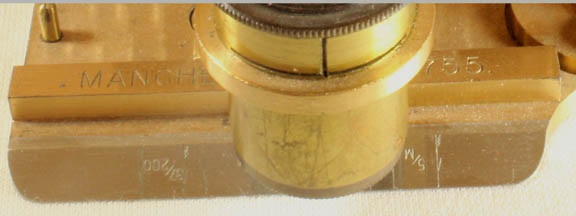
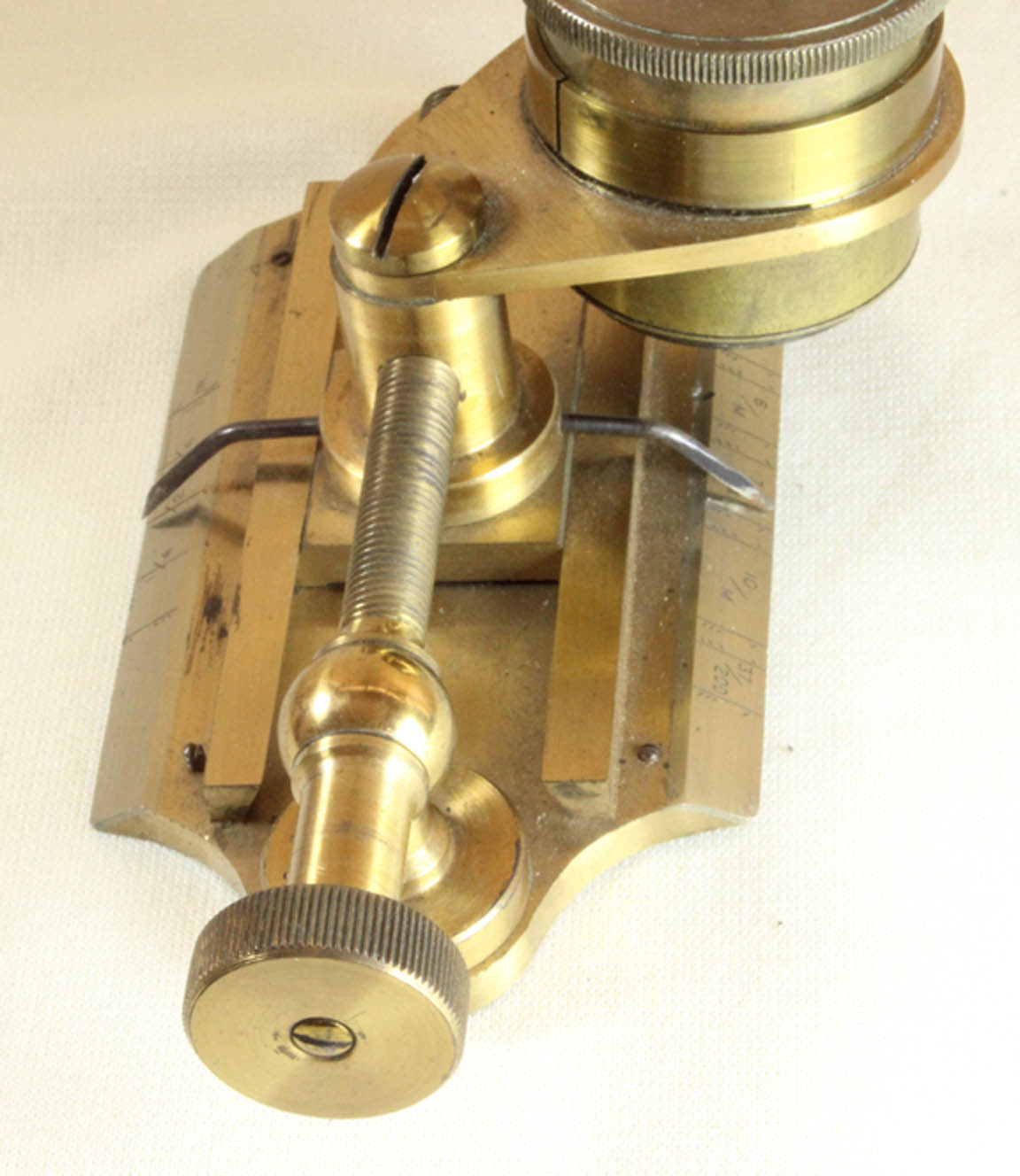
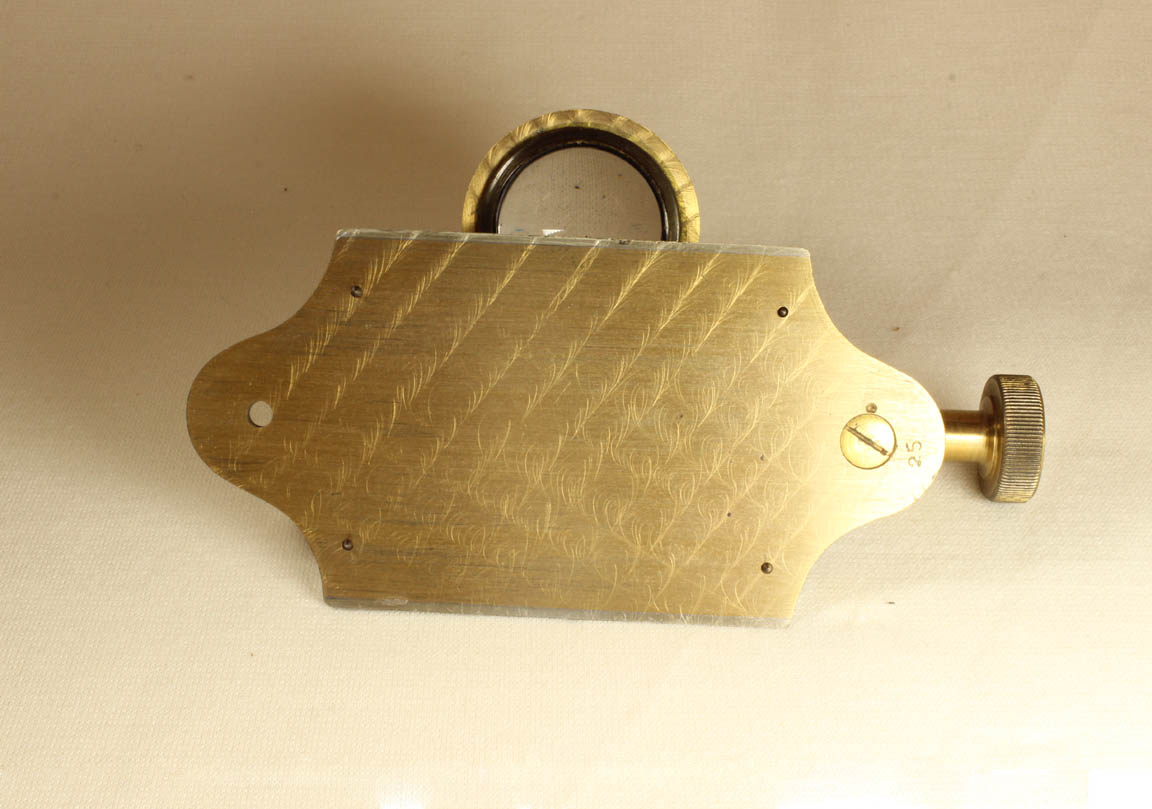 This instrument, sold by Armstrong & Brother, Manchester and Liverpool, is very similar to the one by Casartelli noted in the paragraph before this one. It is slightly larger, and the base is symmetrically shaped with a hole on one side, presumably allowing it to be hung up on a hook. The optical element is also much larger. It has other more subtle differences from the Casartelli model, such as the spacing of the threads on the screw (finer), and the straight profile of the stem attached to the knob. It also came in its own box but in this instance, only the inside of the box is signed, and the instrument itself has no signature. The scales are the same as the Casartelli model. The metric scale has separate areas for 5,6,7, and 10 mm, and one for 37/200. Just as in the Casartelli model, this scale cannot be used as a continuous scale. The inch scale is calibrated the same way as the Casartelli, so it can be used to count threads in one quarter inch to a full one inch range. The knurling on the knob for this model is straight, whereas the knurling for the Casartelli is in a cross-hatched pattern. English, between 1904 and 1914.
This instrument, sold by Armstrong & Brother, Manchester and Liverpool, is very similar to the one by Casartelli noted in the paragraph before this one. It is slightly larger, and the base is symmetrically shaped with a hole on one side, presumably allowing it to be hung up on a hook. The optical element is also much larger. It has other more subtle differences from the Casartelli model, such as the spacing of the threads on the screw (finer), and the straight profile of the stem attached to the knob. It also came in its own box but in this instance, only the inside of the box is signed, and the instrument itself has no signature. The scales are the same as the Casartelli model. The metric scale has separate areas for 5,6,7, and 10 mm, and one for 37/200. Just as in the Casartelli model, this scale cannot be used as a continuous scale. The inch scale is calibrated the same way as the Casartelli, so it can be used to count threads in one quarter inch to a full one inch range. The knurling on the knob for this model is straight, whereas the knurling for the Casartelli is in a cross-hatched pattern. English, between 1904 and 1914.
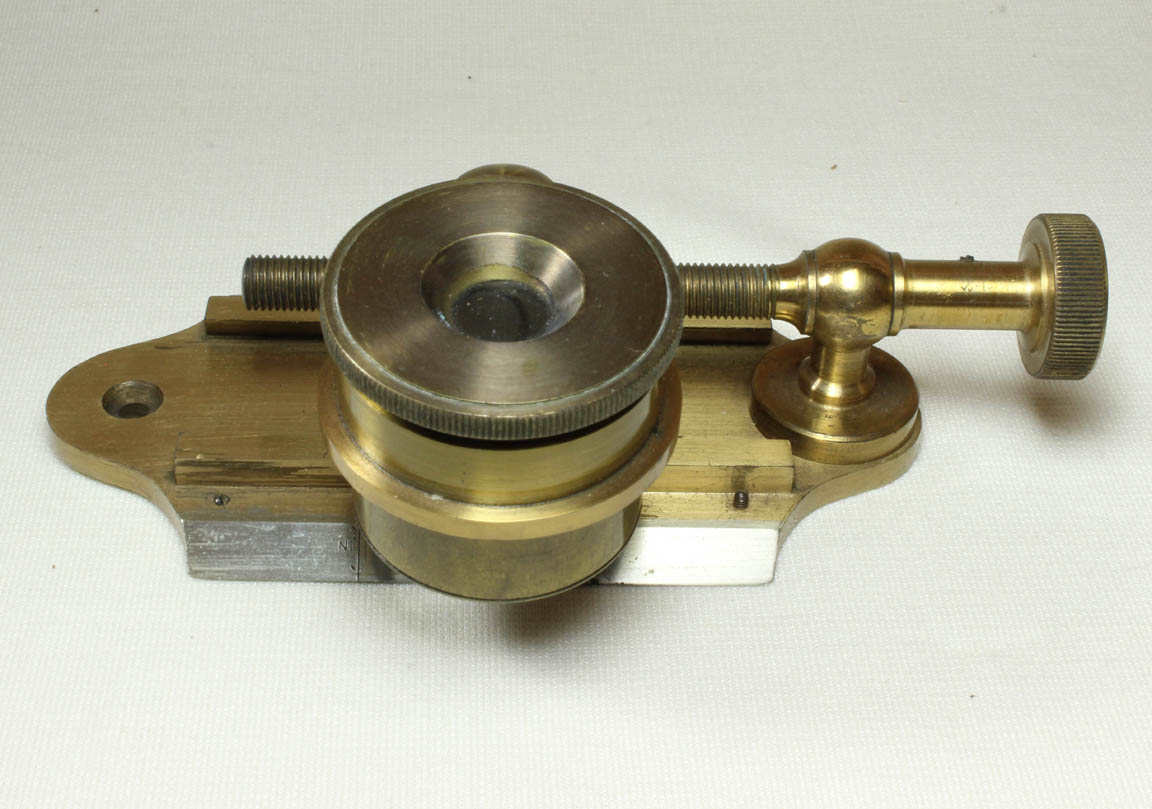
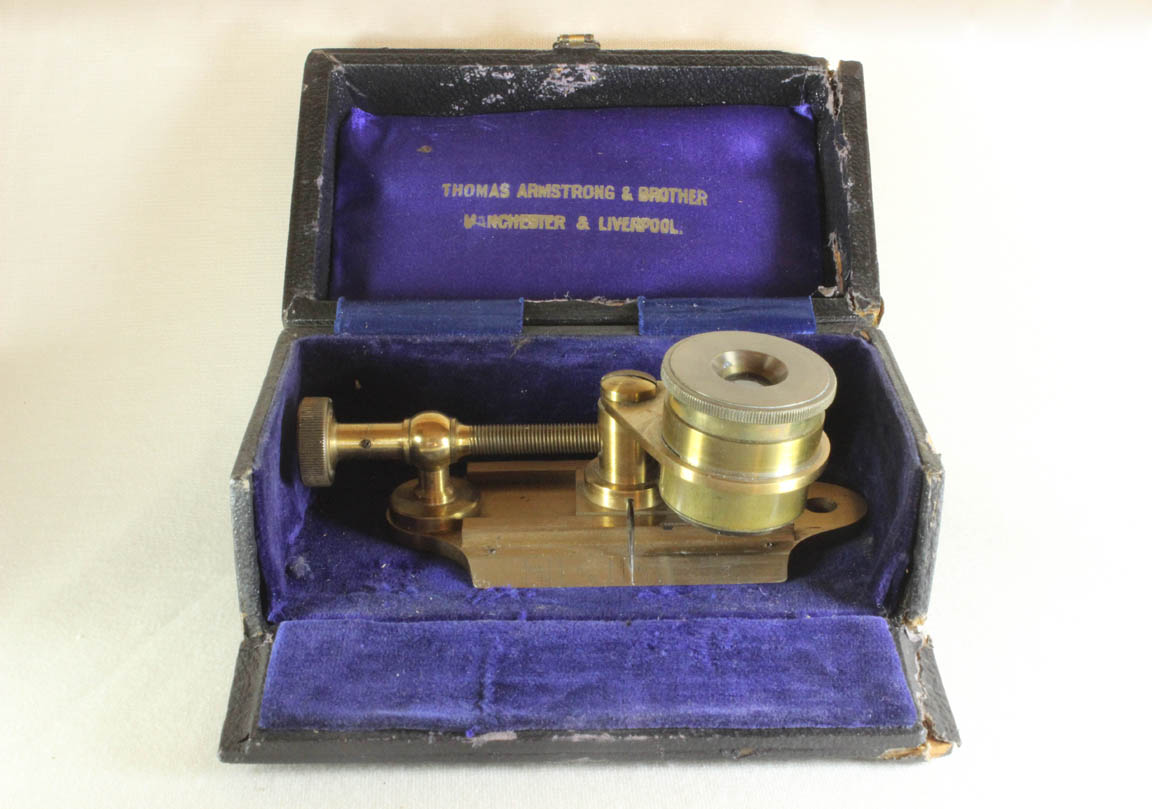
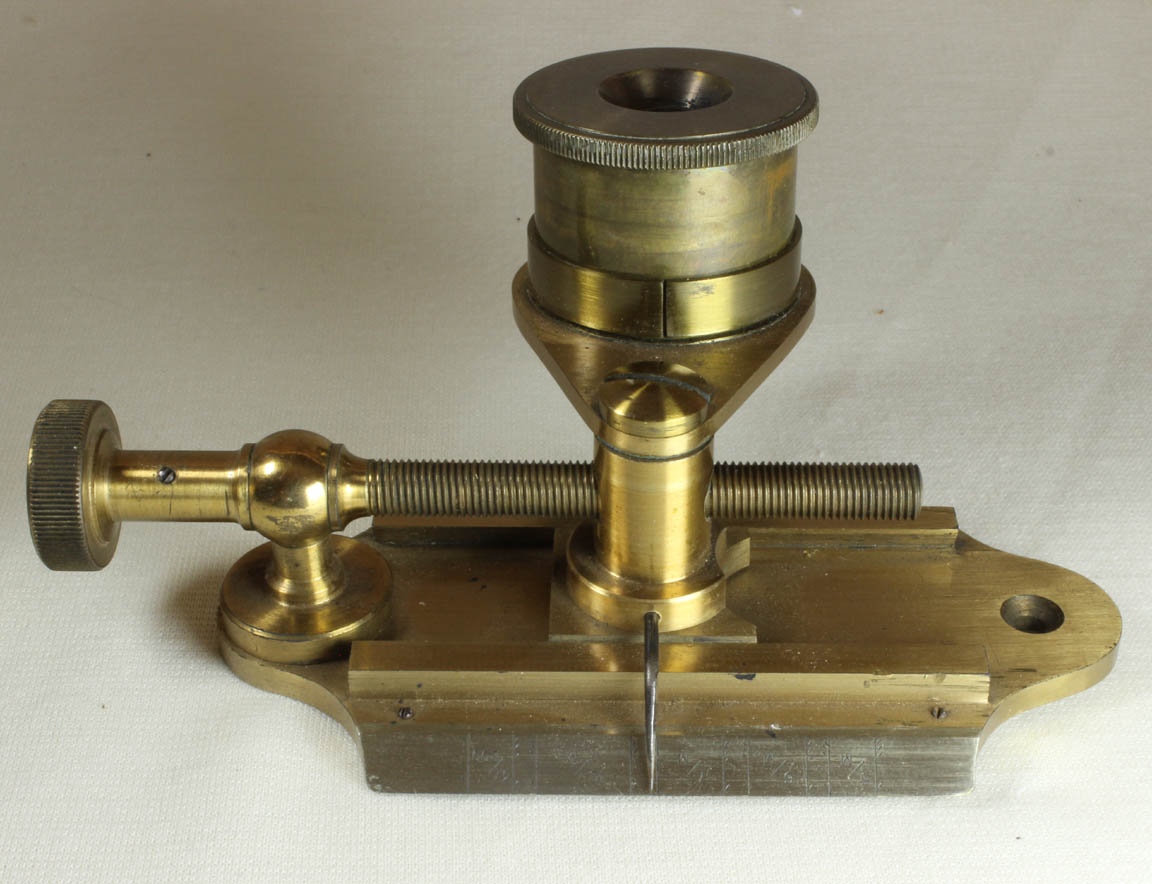
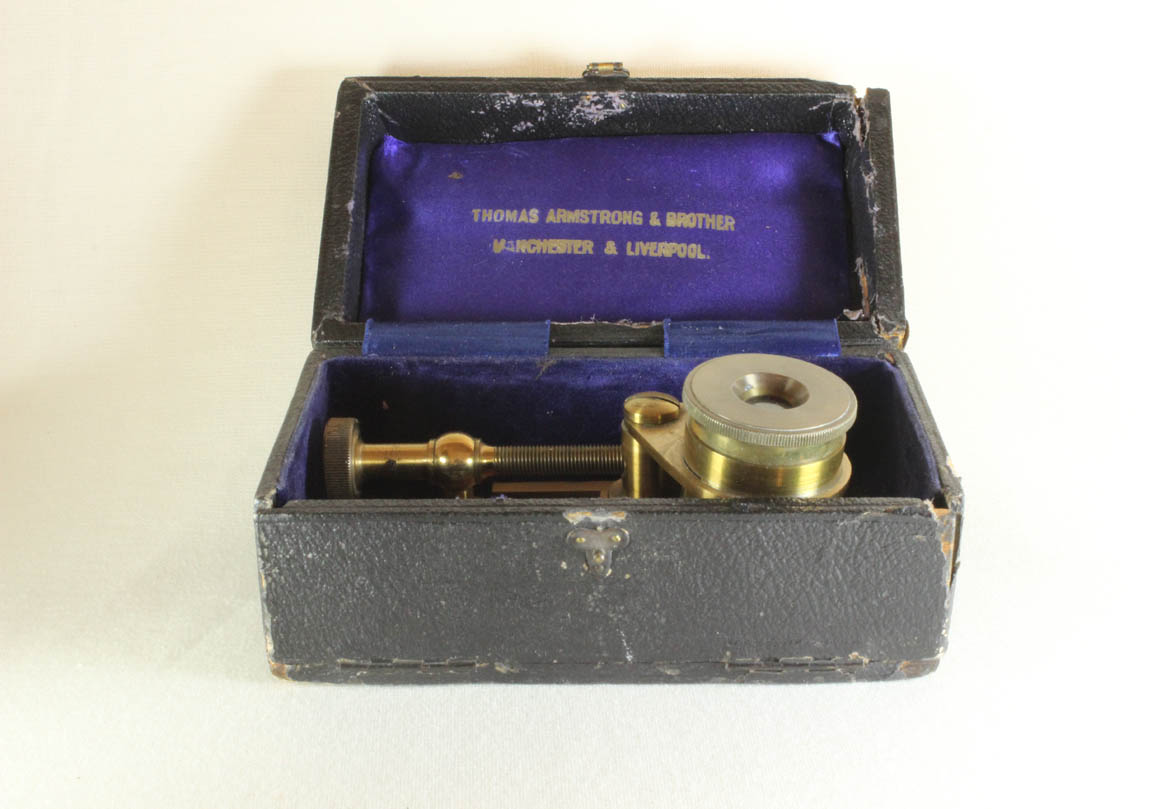
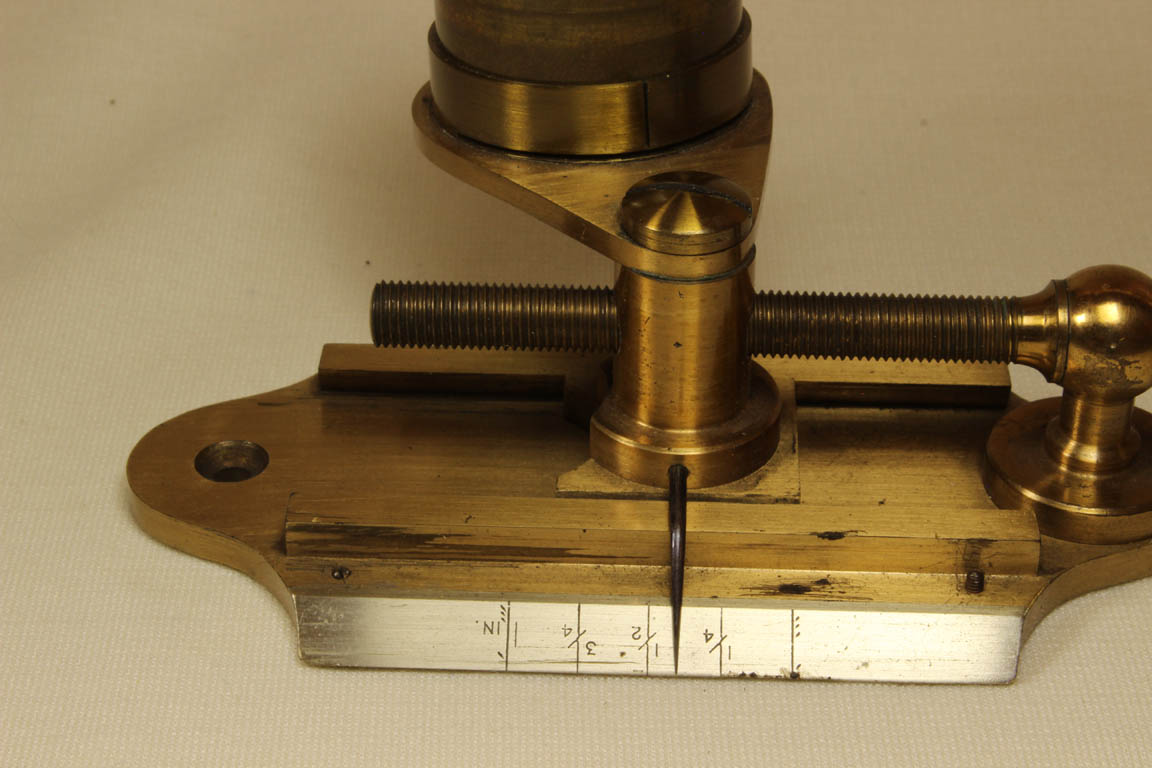
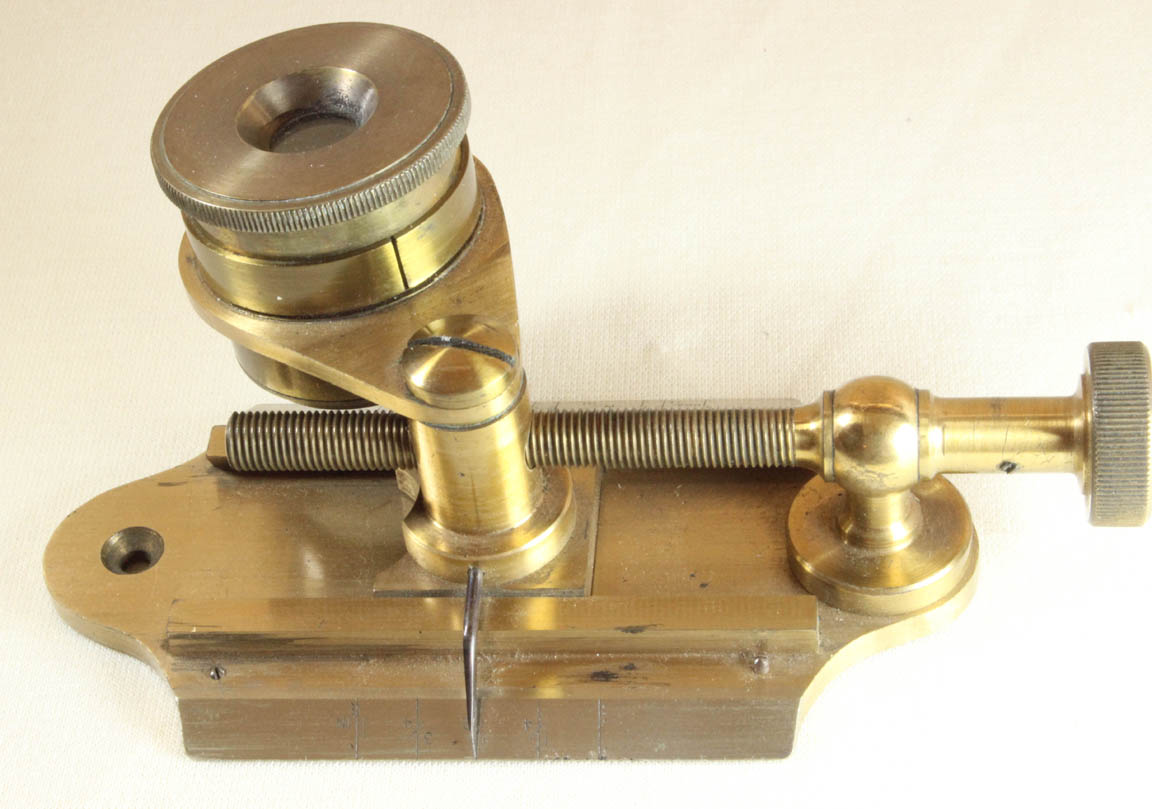
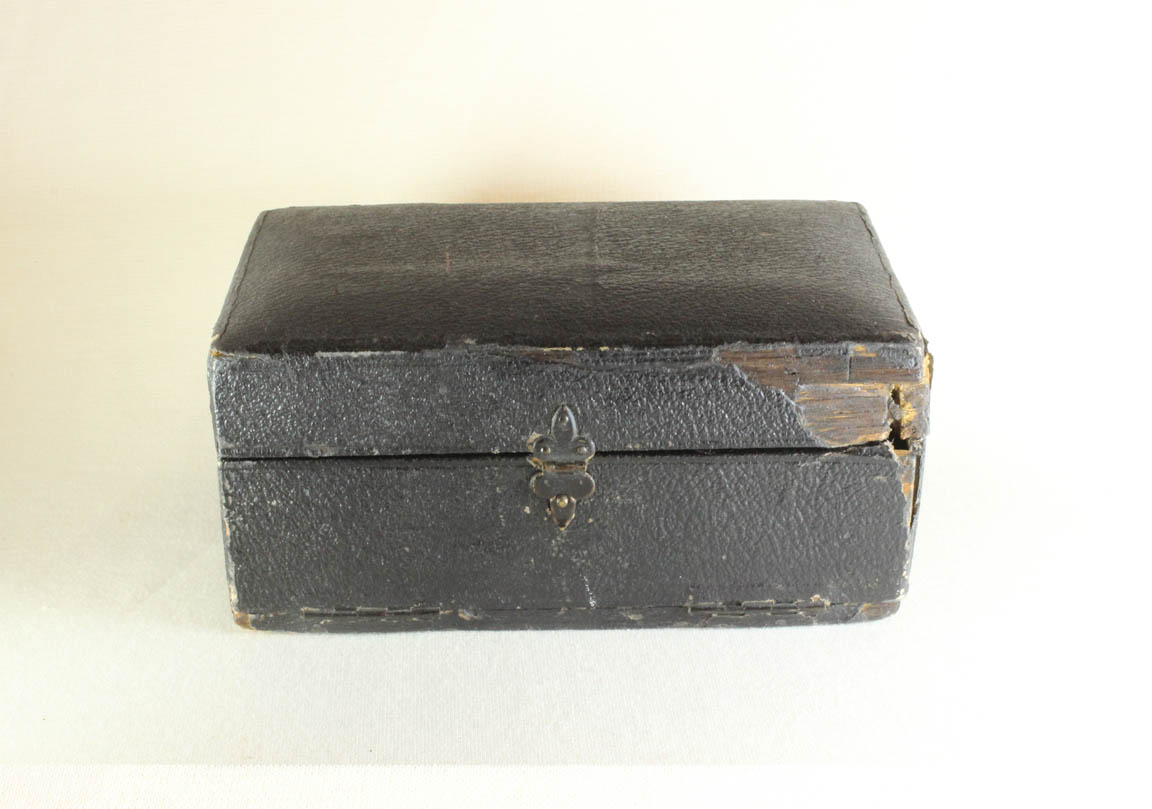
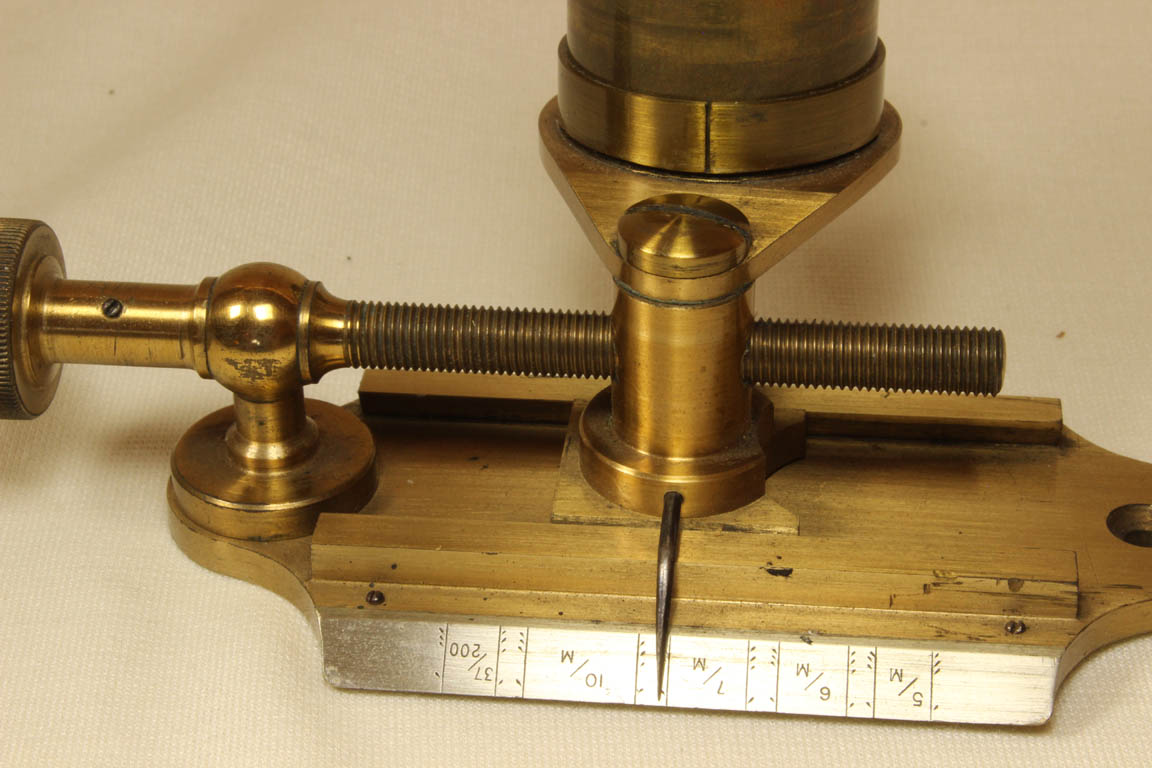
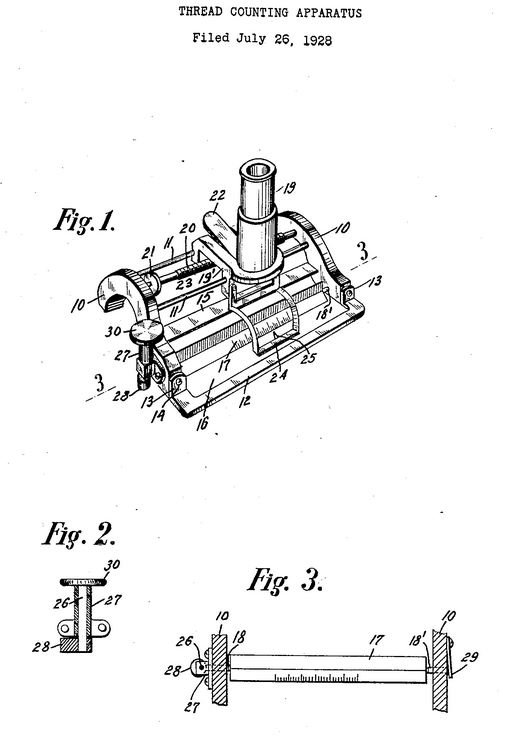 Signed 'Chas. Lowinson, New York, N.Y., PAT 1740970, 996 A,' the patent was recorded December 24 1929 and was issued to August and Louis Chronik of New York City. Called the 'Triplex,' it was touted as an improvement in a prior patent of September 20, 1910 for the original Triplex model.
This further refinement of the thread counter includes three different scales on a rotating triangular scale. The eyepice focus is simplified by using a pin riding in a spiral groove instead of a threaded eyepiece. There is an adjustment on the side that allows slight movement of the scale left or right, to line up with a thread to start the count. There is also a facility to move the pointer quickly with a push button which disengages the screw moving the pointer. This instrument is made of lightweight alloys. The 1910 patent is for essentially the same design, except for the cam movement of the scale, which is the major change in the newer patent. It is not as high a quality as the all-brass examples by other makers.
This is American, second quarter of 20th century, after 1929.
Signed 'Chas. Lowinson, New York, N.Y., PAT 1740970, 996 A,' the patent was recorded December 24 1929 and was issued to August and Louis Chronik of New York City. Called the 'Triplex,' it was touted as an improvement in a prior patent of September 20, 1910 for the original Triplex model.
This further refinement of the thread counter includes three different scales on a rotating triangular scale. The eyepice focus is simplified by using a pin riding in a spiral groove instead of a threaded eyepiece. There is an adjustment on the side that allows slight movement of the scale left or right, to line up with a thread to start the count. There is also a facility to move the pointer quickly with a push button which disengages the screw moving the pointer. This instrument is made of lightweight alloys. The 1910 patent is for essentially the same design, except for the cam movement of the scale, which is the major change in the newer patent. It is not as high a quality as the all-brass examples by other makers.
This is American, second quarter of 20th century, after 1929.
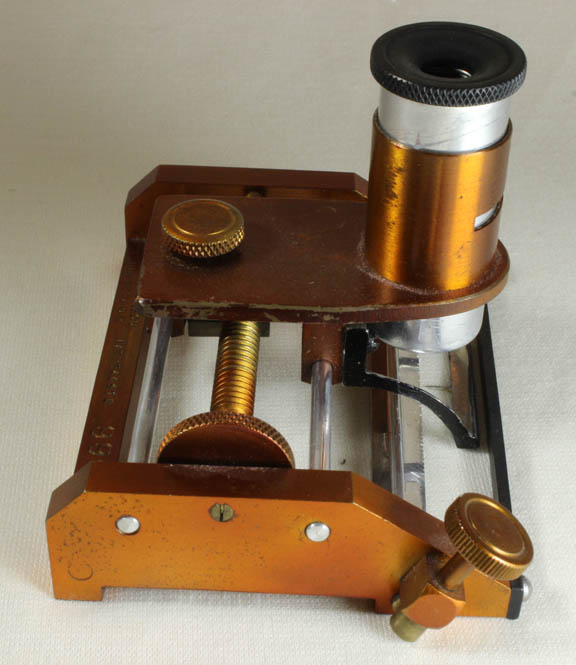

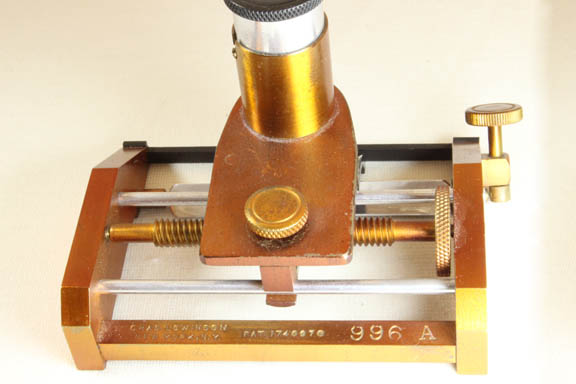
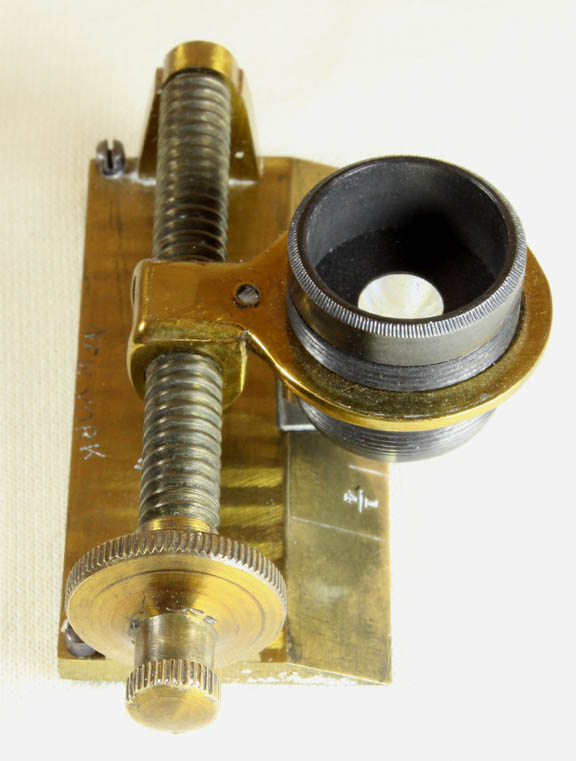 This is the smallest of the thread counters in this collection, made and signed by W.T. Gregg. Like most of the others here, it features adjustable focus and comes in its own case. The case is missing its top covering. This is American, first half of 20th C., likely after the first quarter of the century.
This is the smallest of the thread counters in this collection, made and signed by W.T. Gregg. Like most of the others here, it features adjustable focus and comes in its own case. The case is missing its top covering. This is American, first half of 20th C., likely after the first quarter of the century.
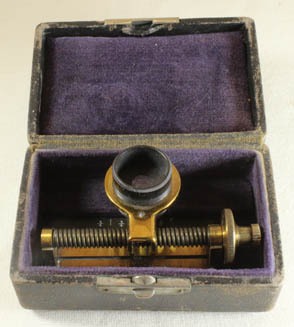
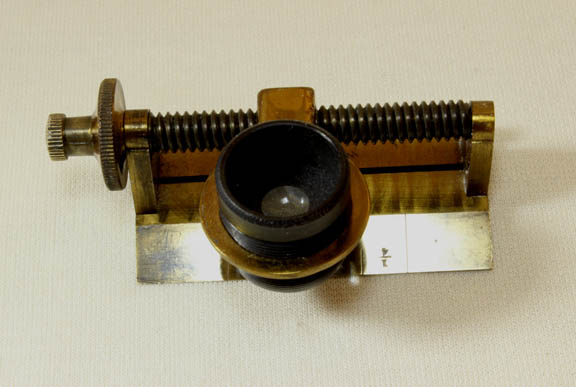
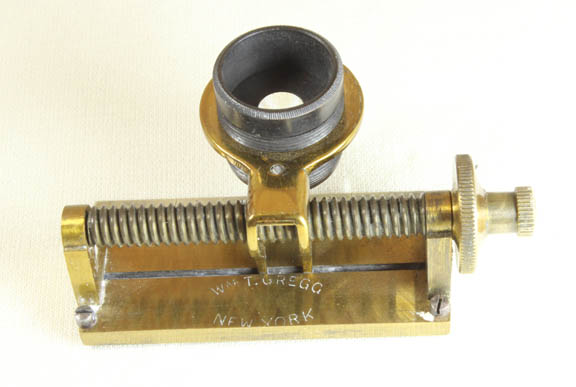
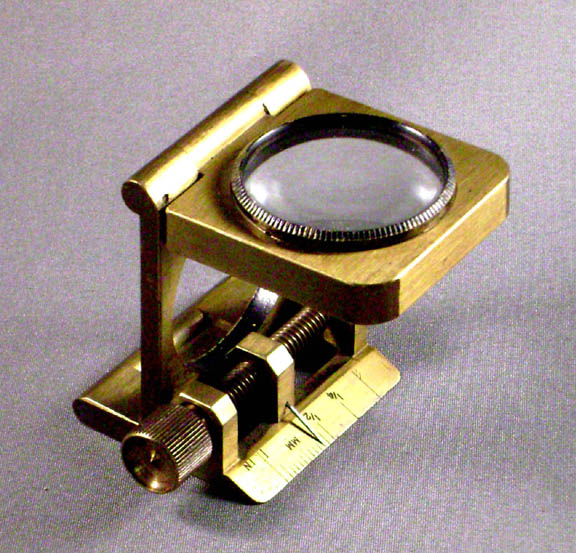
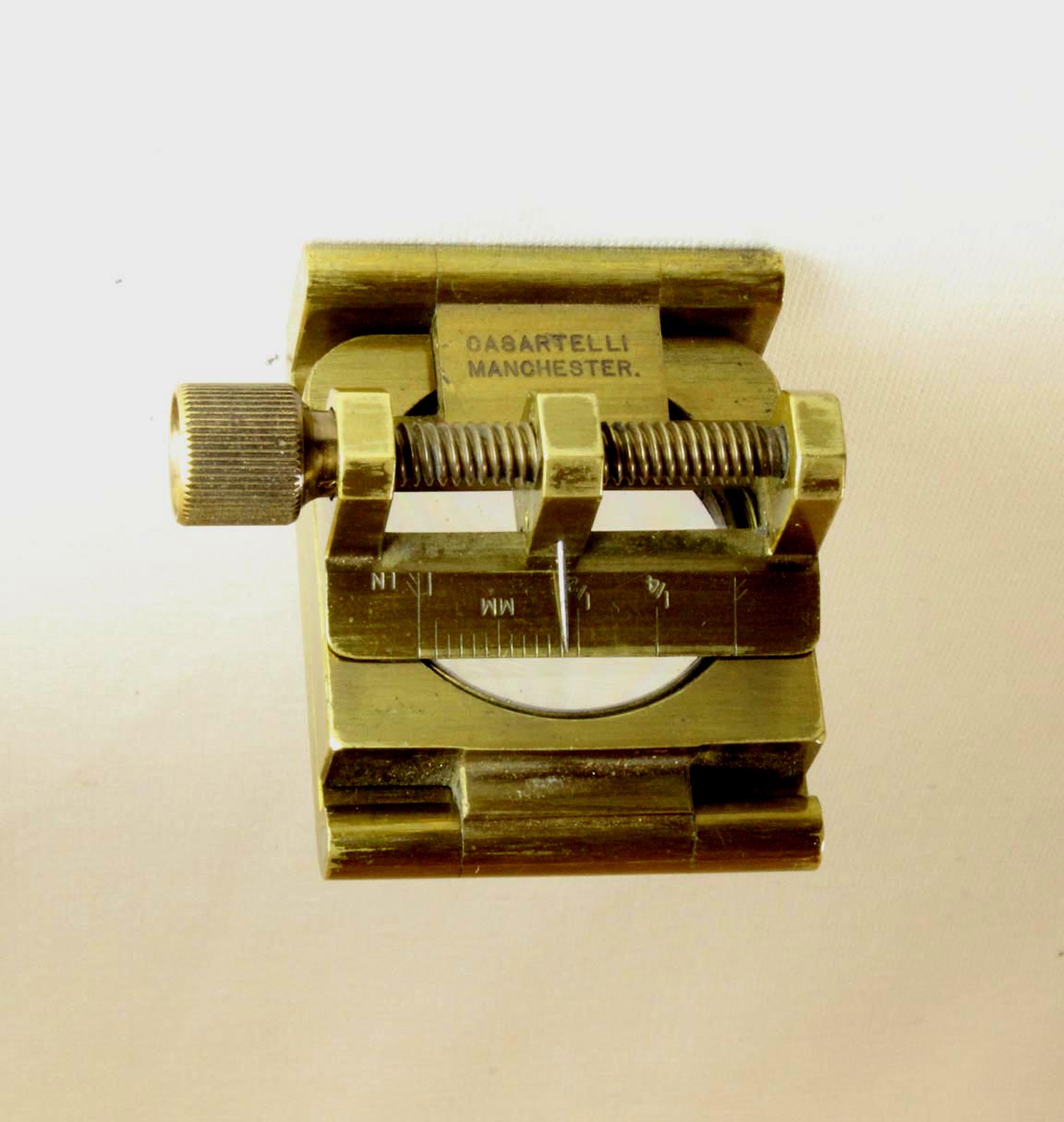
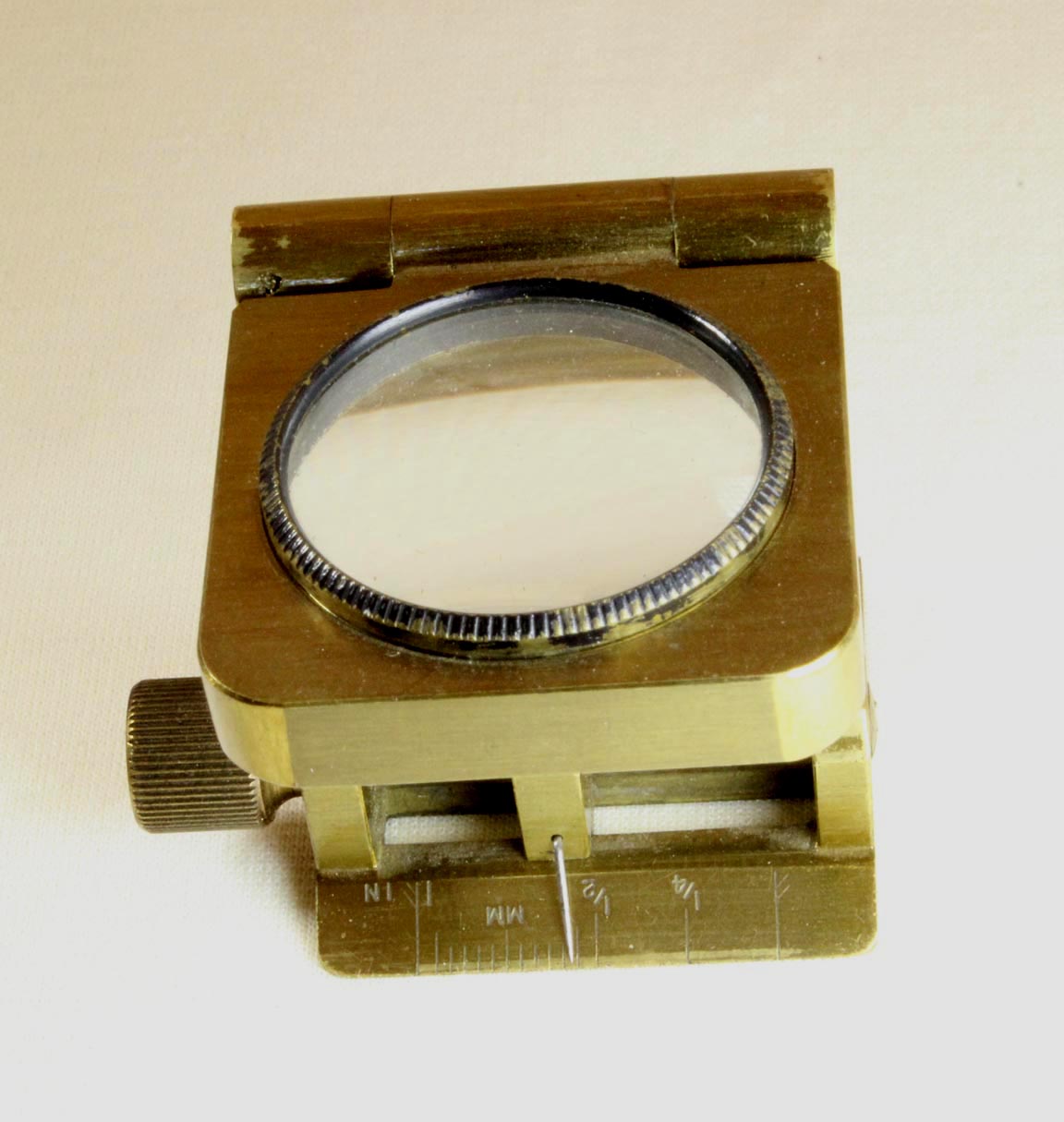
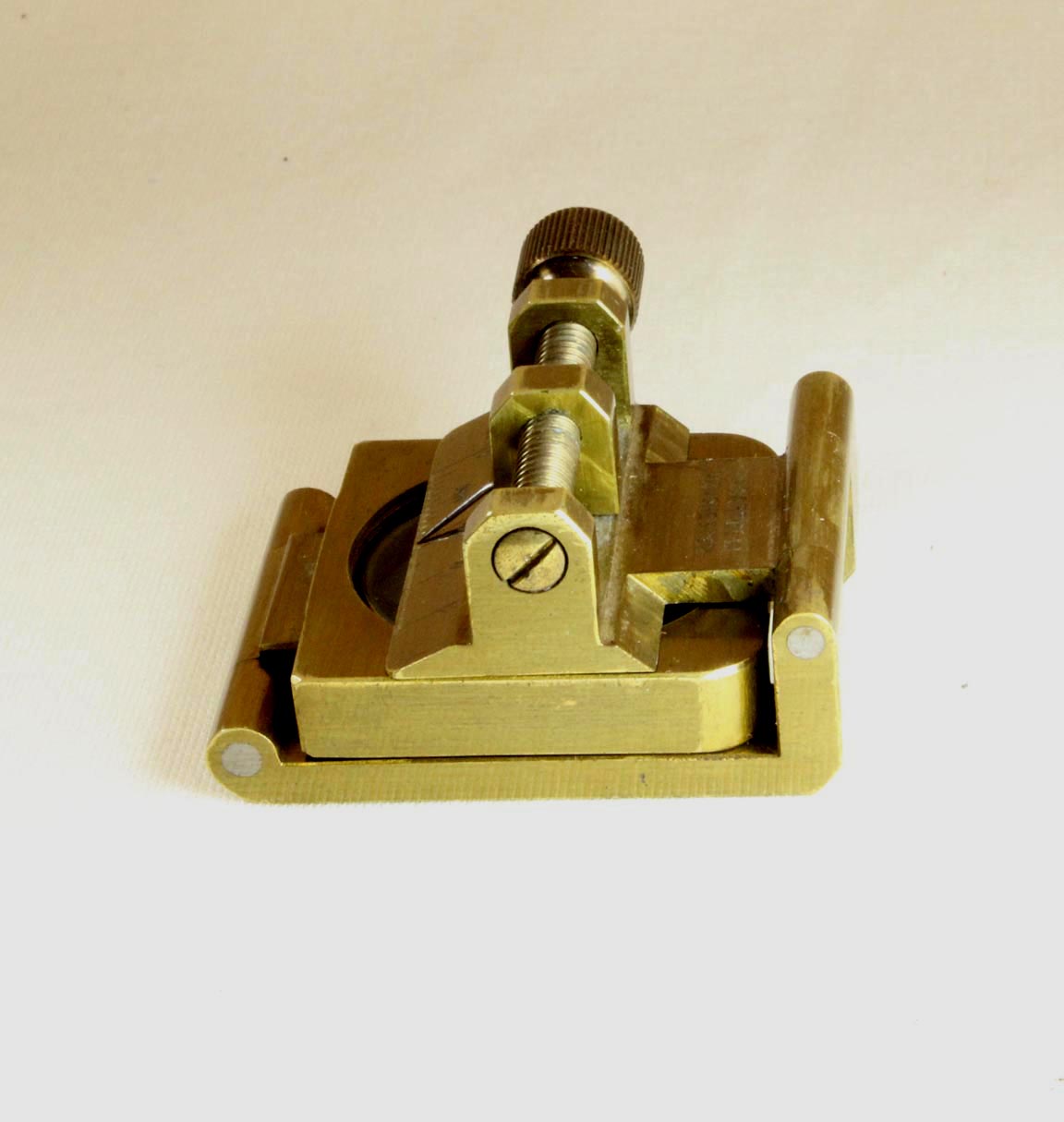
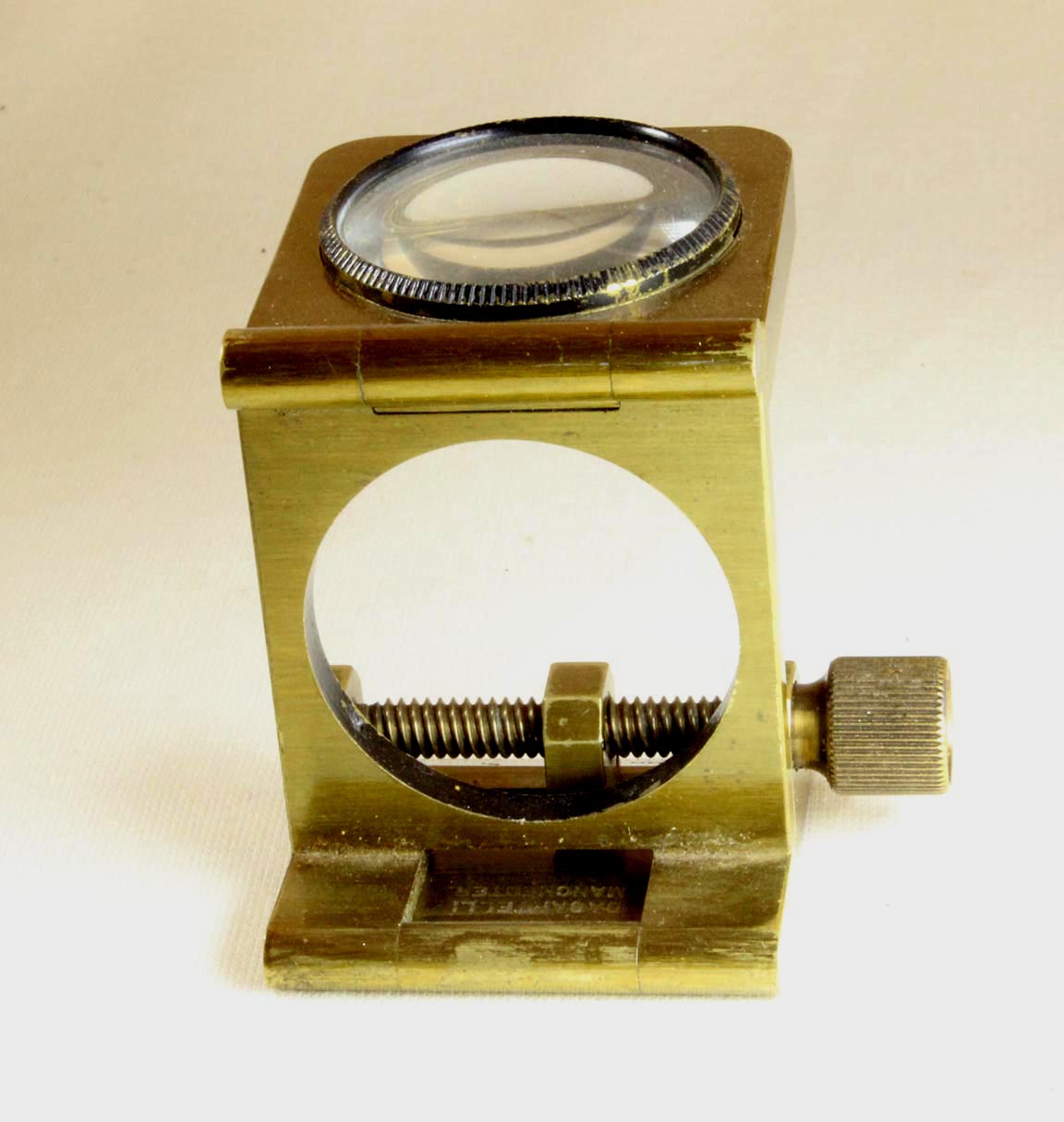
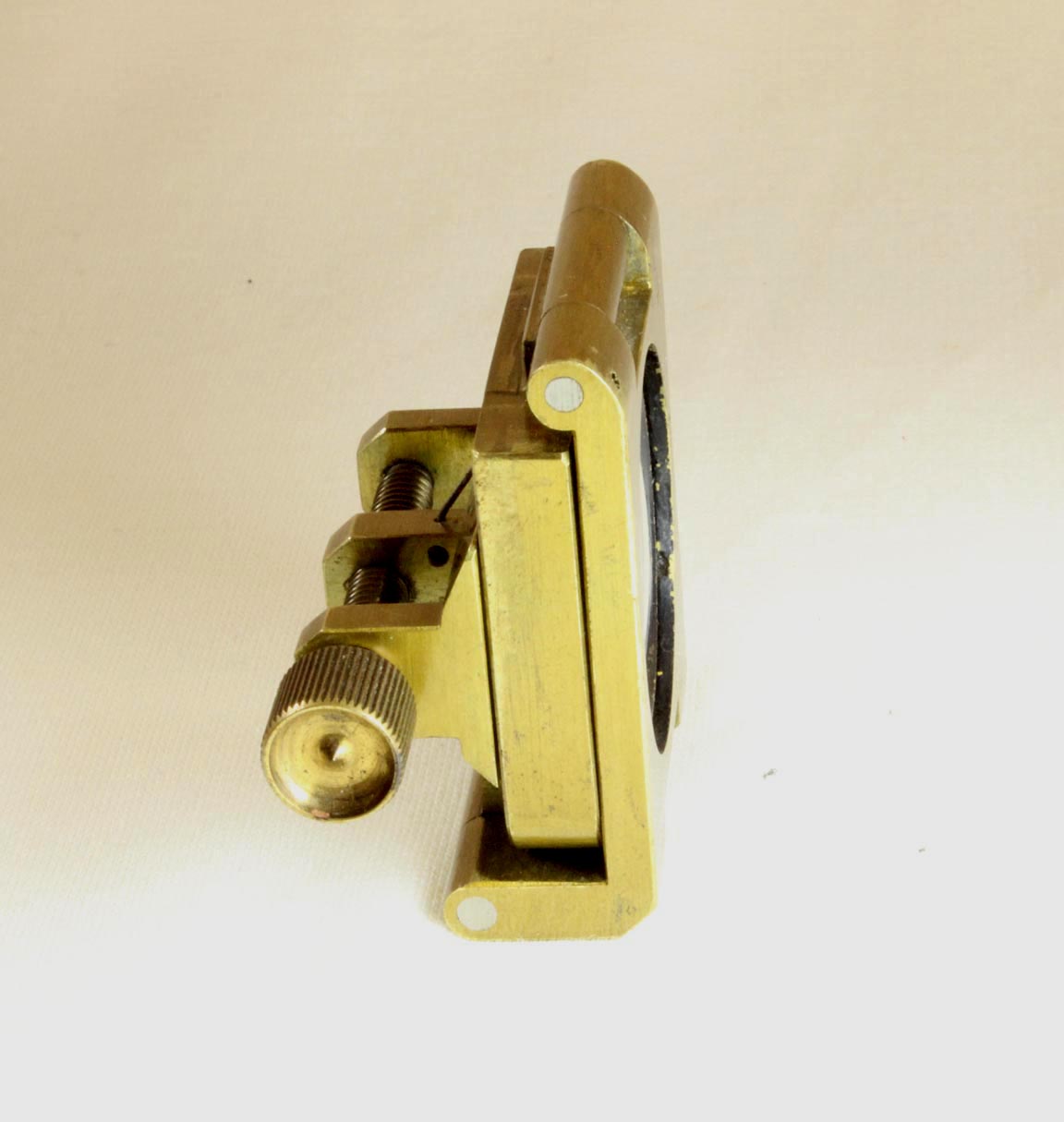
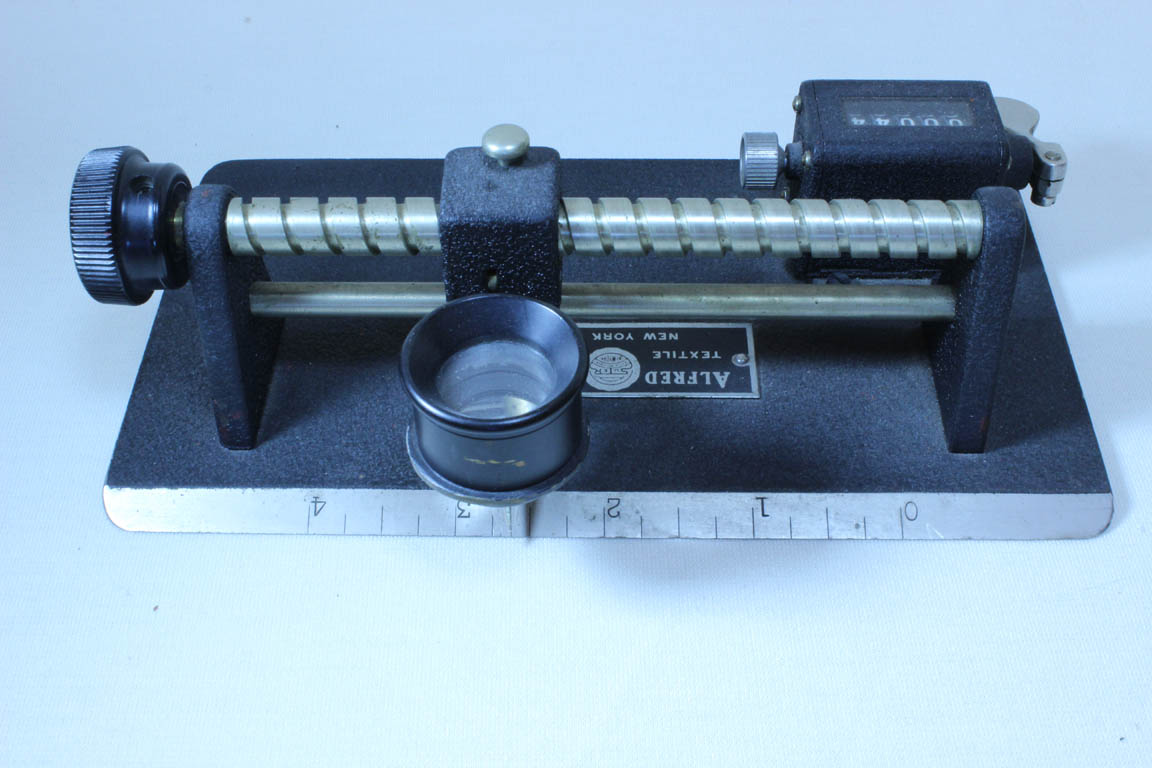

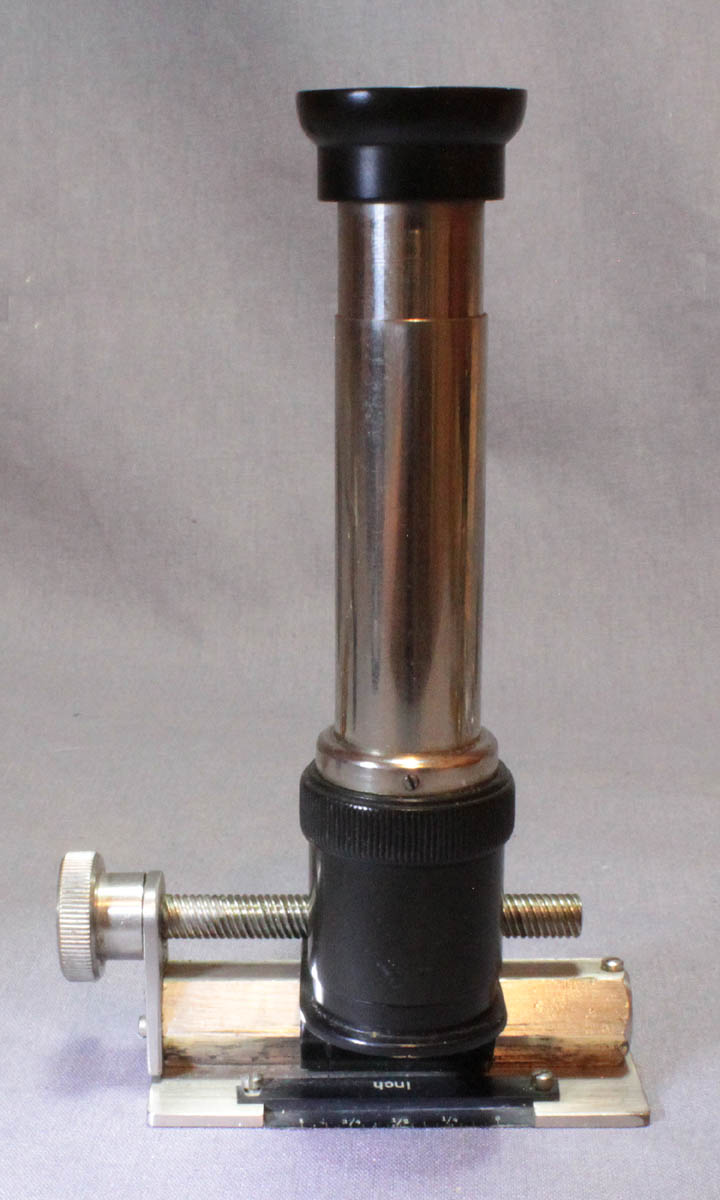 This is a compound thread counter called the
This is a compound thread counter called the MachinenspinneIt was made in Germany and this example was sold by an American Company. It has variable magnification by sliding the draw tube. It predates WWII.
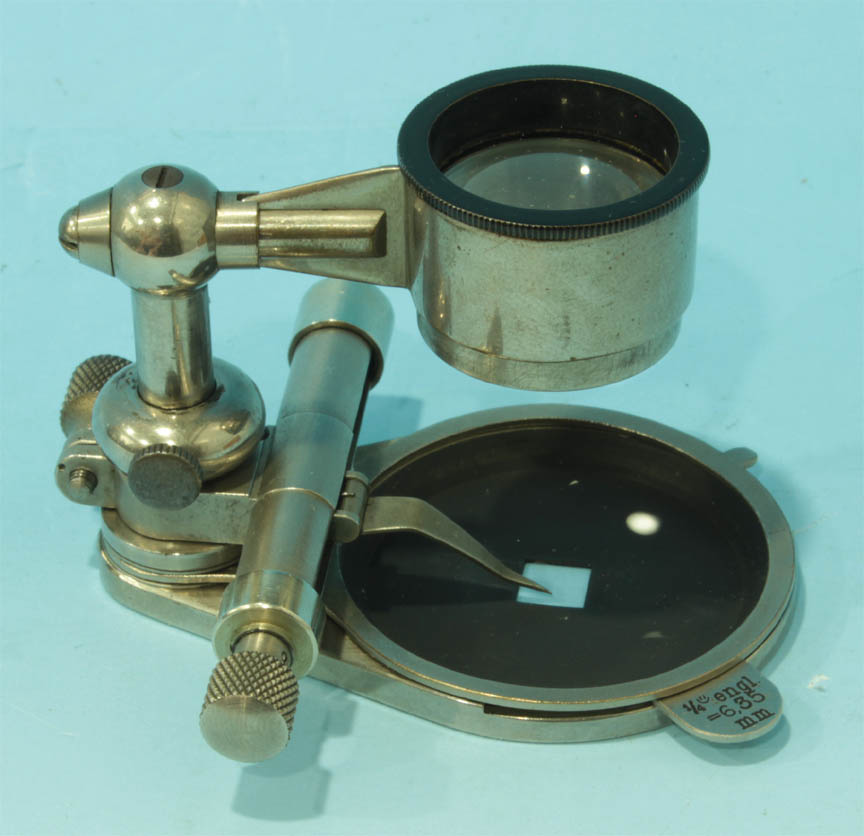 In the 1930's Zeiss came out with a thread counter that combined a moveable pointer with standard size openings which could be changed as desired.
In the 1930's Zeiss came out with a thread counter that combined a moveable pointer with standard size openings which could be changed as desired.